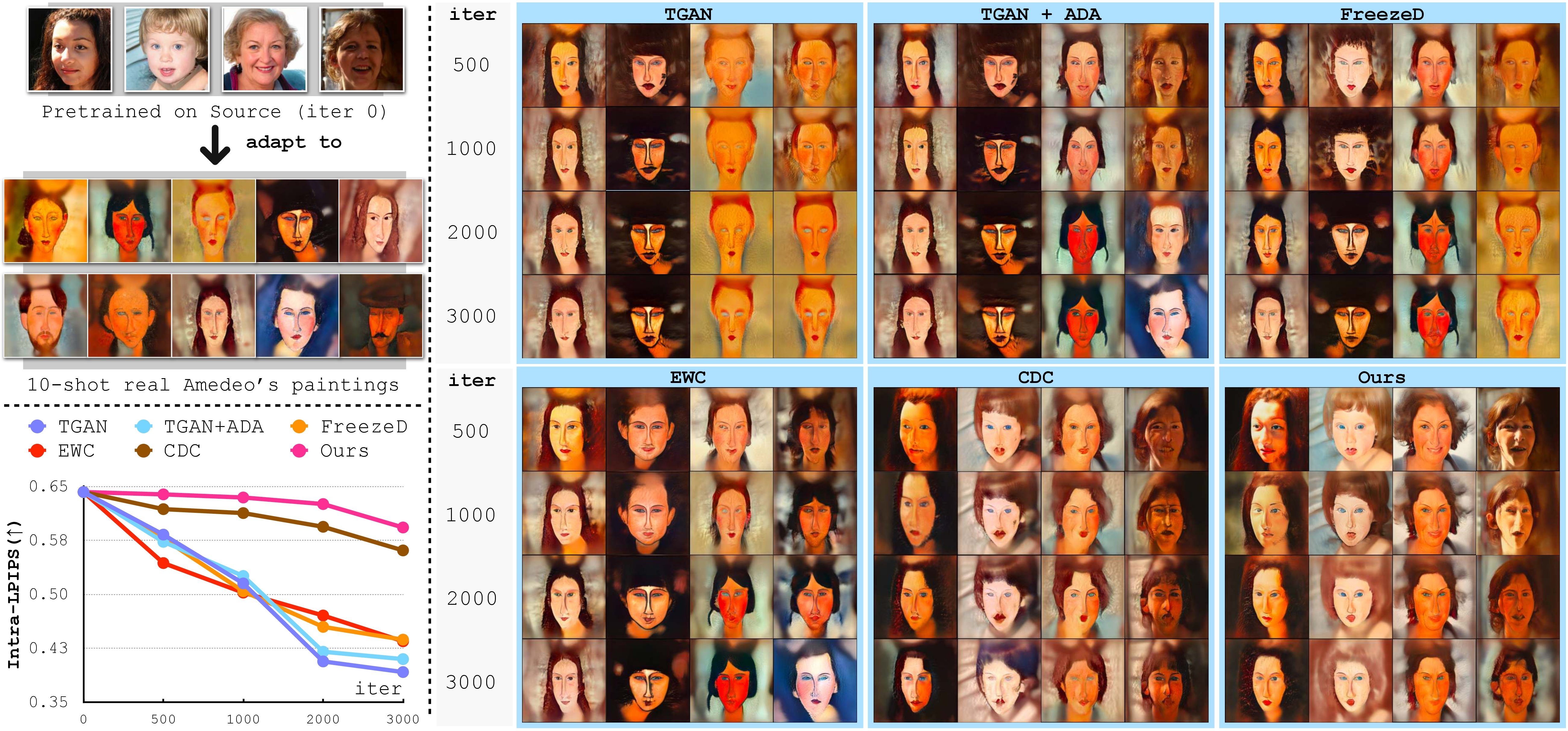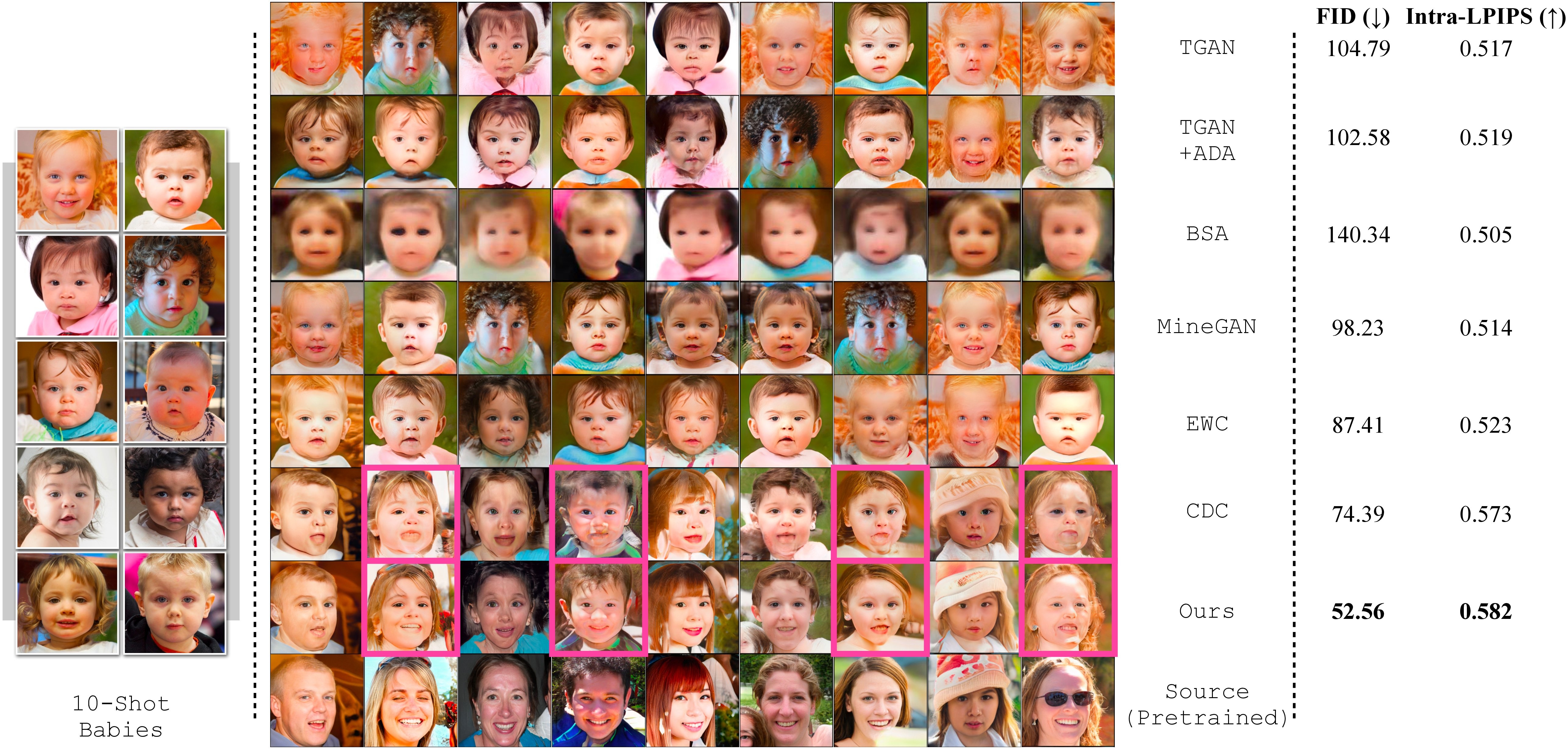|
Modern GANs excel at generating high quality and diverse images. However, when transferring the pretrained GANs on small target data (e.g., 10-shot), the generator tends to replicate the training samples. Several methods have been proposed to address this few-shot image generation task, but there is a lack of effort to analyze them under a unified framework. As our first contribution, we propose a framework to analyze existing methods during the adaptation. Our analysis discovers that while some methods have disproportionate focus on diversity preserving which impede quality improvement, all methods achieve similar quality after convergence. Therefore, the better methods are those that can slow down diversity degradation. Furthermore, our analysis reveals that there is still plenty of room to further slow down diversity degradation. Informed by our analysis and to slow down the diversity degradation of the target generator during adaptation, our second contribution proposes to apply mutual information (MI) maximization to retain the source domain’s rich multi-level diversity information in the target domain generator. We propose to perform MI maximization by contrastive loss (CL), leverage the generator and discriminator as two feature encoders to extract different multi-level features for computing CL. We refer to our method as Dual Contrastive Learning (DCL). Extensive experiments on several public datasets show that, while leading to a slower diversity-degrading generator during adaptation, our proposed DCL brings visually pleasant quality and state-of-the-art quantitative performance.
|





